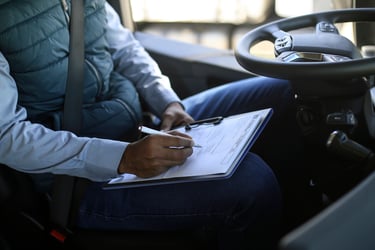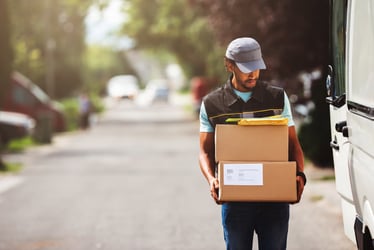Related Posts



You are about to leave Risk Strategies website and view the content of an external website.
You are leaving risk-strategies.com
By accessing this link, you will be leaving Risk Strategies website and entering a website hosted by another party. Please be advised that you will no longer be subject to, or under the protection of, the privacy and security policies of Risk Strategies website. We encourage you to read and evaluate the privacy and security policies of the site you are entering, which may be different than those of Risk Strategies.

In mid-March when stay-at-home orders were issued to curb the spread of COVID-19, millions of homebound Americans turned to Amazon for everything from basic supplies to leisure shopping. The influx of orders skyrocketed quotas and pushed into stark view the grueling and dangerous risks faced daily by Amazon delivery drivers – many of whom aren’t even employed, nor paid wages directly by Amazon.
According to data from 2019, Amazon relies on at least 800 third-party companies, known as “delivery service partners” or “DSPs,” to manage the roughly 75,000 drivers who deliver its packages. Making relatively modest up-front investments, these independently owned businesses operate fleets typically between 20-50 vehicles. They contract directly with Amazon to run its routes and deliver hundreds of packages per day, with the potential to earn up to $300,000/year.
It sounds like a great business opportunity, so what should you know before you buy in?
Hiring Employees vs. Independent Contractors
Unlike most third-party transportation companies, Amazon requires that its DSPs hire, rather than contract with, its drivers to defer costs and divorce itself of responsibility. Using the W-2 employee model subjects the DSP to a wide array of expenses, including workers’ compensation, employment taxes, benefits, overtime, vehicle maintenance and most importantly – liability.
That means if something goes wrong, the damages and liability are on the shoulders of the DSP, not Amazon. If a driver gets into an accident, gets hurt on the job, the company falls into bankruptcy, etc., Amazon is effectively insulated from the fall out.
Over the last few years, drivers delivering Amazon packages were involved in more than 60 serious crashes, including at least 10 that resulted in fatalities. As the bad news mounted, Amazon simply cut contracts with three DSPs, triggering layoffs of more than 2,000 workers across eight states.
Lack of a Safety Culture
Following its split from FedEx in 2019 and to keep up with the pandemic demand, Amazon pushed hard to ramp-up and build out its own delivery system. Their efforts strained a logistical network that didn’t have adequate time to prepare, exacerbating a multitude of safety issues.
Becoming an Amazon delivery driver requires no certifications, testing, experience or specialized licenses. Tight scheduling and challenging quotas condition these often-unexperienced drivers to prioritize speed over safety. Violating posted speed limits, rolling through stop signs, and skipping lunch and bathroom breaks have all become standard operating procedure.
Finding Insurance Is Hard
Insurance plays a foundational role in commerce by providing a backstop against and transfer of risk. However, due to some of the issues described above, finding adequate and reliable insurance as a DSP is hard. There are very few insurance companies who will write for this class of business, especially for those who are just starting out. This limited market leads to high premiums and increasing rates, eating into profit and, ironically, often causing operators to push their fleets harder.
As the pandemic influx has brought these festering issues into focus, it’s become evident that Amazon needs to make changes to stabilize its DSP program. Paying drivers more and capping fleet sizes and daily quotas to be more manageable would be good starting points. Ultimately, to lower risks and increase profitability, Amazon and its DSPs must implement a culture of safety that includes strict safety and loss control programs that train drivers correctly and holds them accountable.
Want to learn more?
Find me on LinkedIn, here.
Connect with the Risk Strategies Transportation team at transportation@risk‐strategies.com.
Email me directly at bice@risk‐strategies.com.
The contents of this article are for general informational purposes only and Risk Strategies Company makes no representation or warranty of any kind, express or implied, regarding the accuracy or completeness of any information contained herein. Any recommendations contained herein are intended to provide insight based on currently available information for consideration and should be vetted against applicable legal and business needs before application to a specific client.


